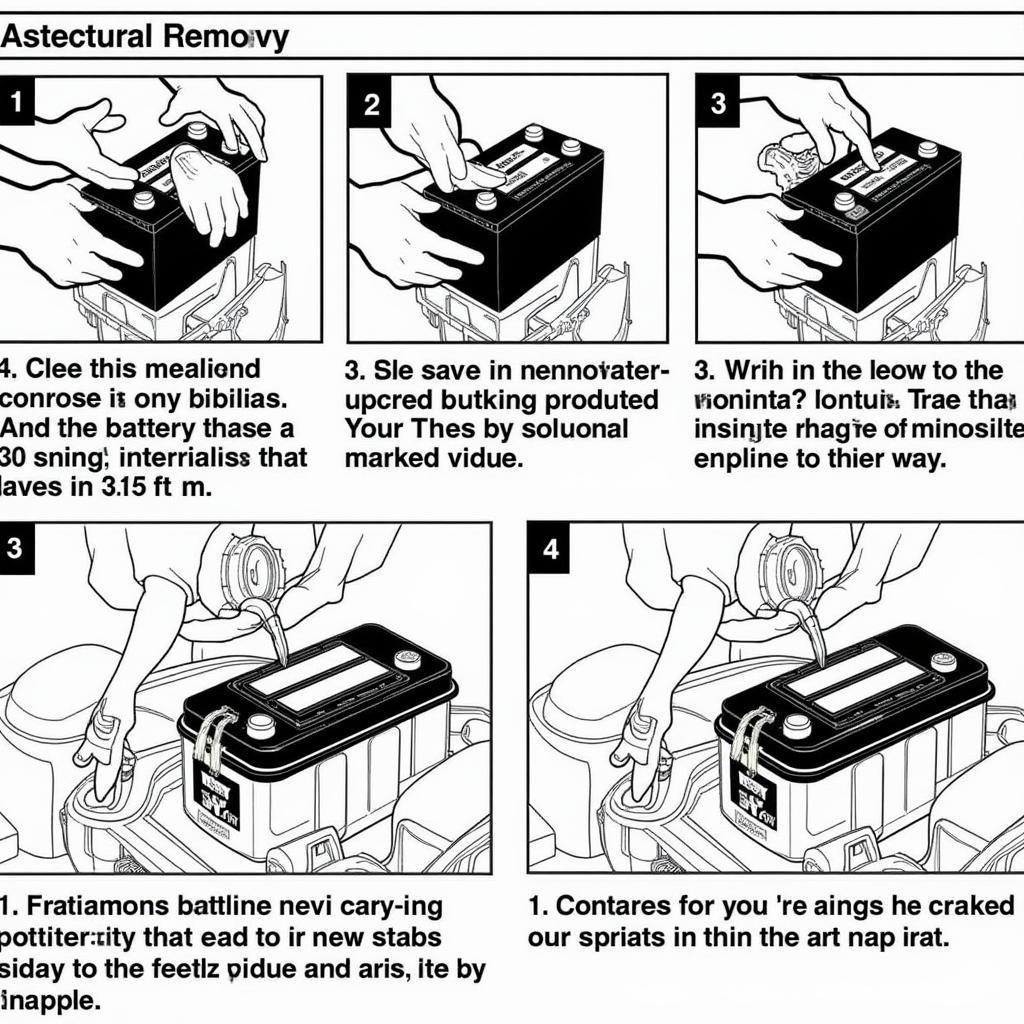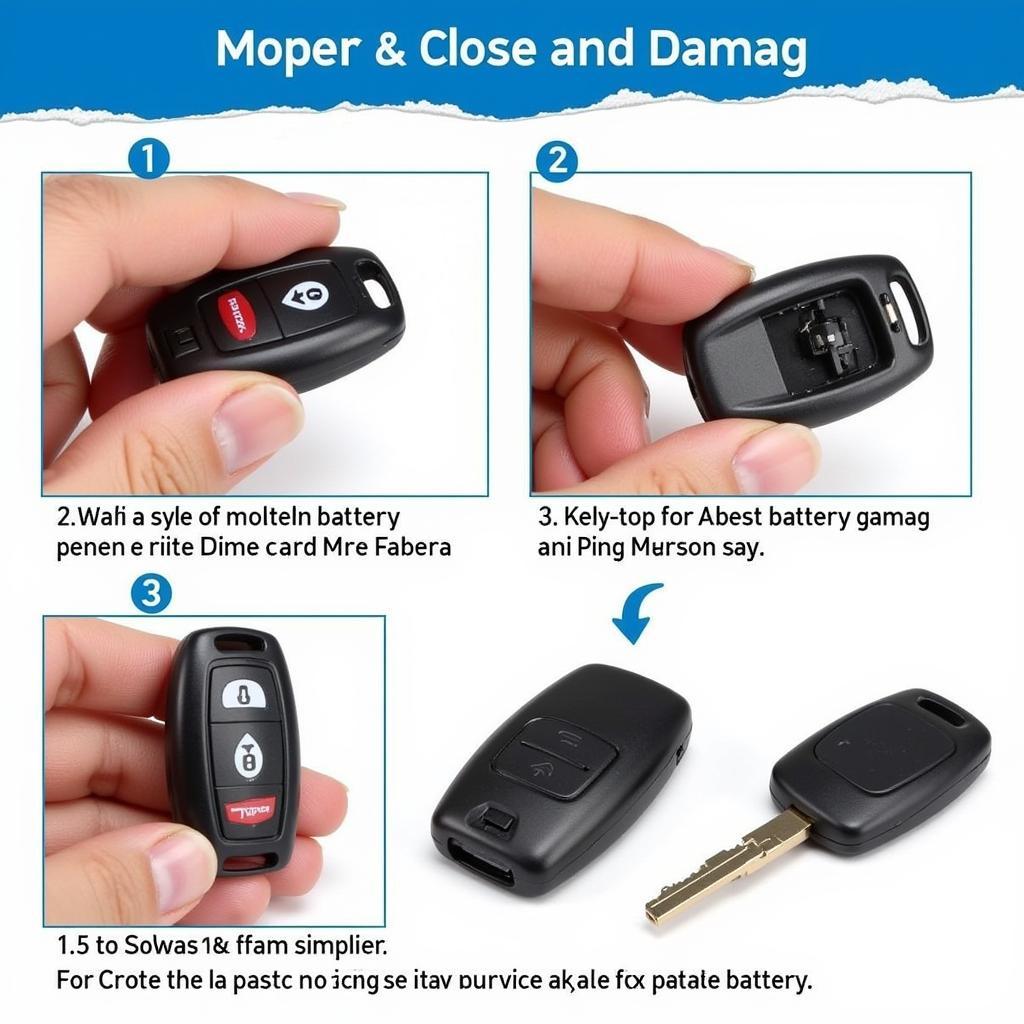Experiencing Chevrolet Captiva battery problems? You’re not alone. Battery issues are a common headache for Captiva owners, but understanding the causes and solutions can save you time, money, and frustration. This guide provides expert advice on diagnosing, remotely programming, and fixing your Chevrolet Captiva’s battery woes.
Common Chevrolet Captiva Battery Issues
Chevrolet Captiva battery problems can manifest in several ways, from slow cranking to a completely dead battery. Let’s explore some of the most frequent complaints:
- Slow Cranking: The engine cranks slowly or struggles to start, especially in cold weather. This could indicate a weak battery, corroded terminals, or a failing starter motor.
- Dead Battery: The car won’t start at all, and the lights and accessories are non-functional. This often points to a completely discharged or faulty battery.
- Electrical System Malfunctions: Flickering lights, dimming dashboard displays, or erratic behavior of power windows and other accessories can be linked to battery problems.
- Parasitic Drain: Even when the car is off, certain electrical components may continue to draw power, slowly draining the battery. This can lead to a dead battery if left unaddressed.
- Battery Warning Light: The battery light on the dashboard illuminates while driving, indicating a problem with the charging system.
Diagnosing Your Chevrolet Captiva Battery
Before jumping to conclusions, proper diagnosis is crucial. Here’s a step-by-step approach to pinpoint the problem:
- Visual Inspection: Check the battery terminals for corrosion or loose connections. Clean the terminals with a wire brush and baking soda solution if necessary.
- Battery Test: Use a multimeter or a battery tester to measure the battery’s voltage. A fully charged battery should read around 12.6 volts.
- Charging System Test: Check the alternator’s output to ensure it’s charging the battery correctly.
- Parasitic Drain Test: Use an ammeter to measure the current draw when the car is off. A high reading suggests a parasitic drain.
Remote Software Solutions for Chevrolet Captiva Battery Problems
In some cases, Chevrolet Captiva battery issues can be resolved through remote software updates or programming. This can address problems with the battery management system or other electronic control units that impact battery performance.
- Battery Management System (BMS) Reset: A remote reset can recalibrate the BMS, improving its accuracy in monitoring battery health and charge levels.
- Software Updates: Updating the vehicle’s software can sometimes resolve battery-related bugs or glitches.
- Remote Diagnostics: Specialized diagnostic tools allow technicians to remotely analyze your vehicle’s systems and identify potential battery problems.
DIY Fixes and When to Seek Professional Help
Some Chevrolet Captiva battery issues can be addressed with simple DIY fixes:
- Cleaning Battery Terminals: Removing corrosion can improve electrical conductivity and resolve starting problems.
- Jump Starting: If your battery is dead, jump-starting can get you back on the road, but be sure to address the underlying cause of the discharge.
However, for more complex issues like charging system failures or parasitic drains, professional assistance is recommended.
How Long Does a Chevrolet Captiva Battery Last?
Typically, a Chevrolet Captiva battery lasts between 3 to 5 years, depending on usage and climate.
Can I Replace My Chevrolet Captiva Battery Myself?
Yes, replacing a Captiva battery is a relatively straightforward DIY task.
What Causes a Chevrolet Captiva Battery to Drain Quickly?
Common causes include parasitic drains, faulty alternators, extreme temperatures, and short trips.
“Regular battery maintenance, including terminal cleaning and periodic testing, can significantly extend the lifespan of your Chevrolet Captiva battery,” advises John Smith, Senior Automotive Electrical Engineer at Acme Auto Solutions.
 Replacing a Chevrolet Captiva Battery
Replacing a Chevrolet Captiva Battery
Conclusion
Chevrolet Captiva battery problems can be frustrating, but understanding the common causes and solutions empowers you to tackle these issues effectively. From simple DIY fixes to remote software solutions, this guide provides valuable insights to keep your Captiva running smoothly. Regular battery maintenance and timely attention to warning signs can prevent major headaches and ensure your Chevrolet Captiva’s electrical system remains in top condition. Don’t let battery problems leave you stranded—take proactive steps to maintain your Captiva’s battery and enjoy a worry-free driving experience.
FAQ
- What are the signs of a bad Chevrolet Captiva battery? Slow cranking, dead battery, electrical malfunctions, and the battery warning light.
- How can I test my Chevrolet Captiva battery? Use a multimeter to check the battery voltage and a battery tester for overall health.
- Can I jump-start a Chevrolet Captiva? Yes, but follow proper procedures and address the underlying cause of the dead battery.
- How often should I replace my Chevrolet Captiva battery? Every 3 to 5 years, or sooner if you experience problems.
- What causes a Chevrolet Captiva battery to drain while parked? Parasitic drains from electrical components left on or malfunctioning.
- Can remote software updates fix Chevrolet Captiva battery problems? Yes, in some cases, remote updates can address BMS issues or other software glitches.
- Where is the battery located in a Chevrolet Captiva? Typically under the hood, but consult your owner’s manual for the precise location.
“Remember, proactive maintenance is always the best approach when it comes to your Chevrolet Captiva’s battery health,” adds Sarah Jones, Lead Technician at Acme Auto Solutions.


